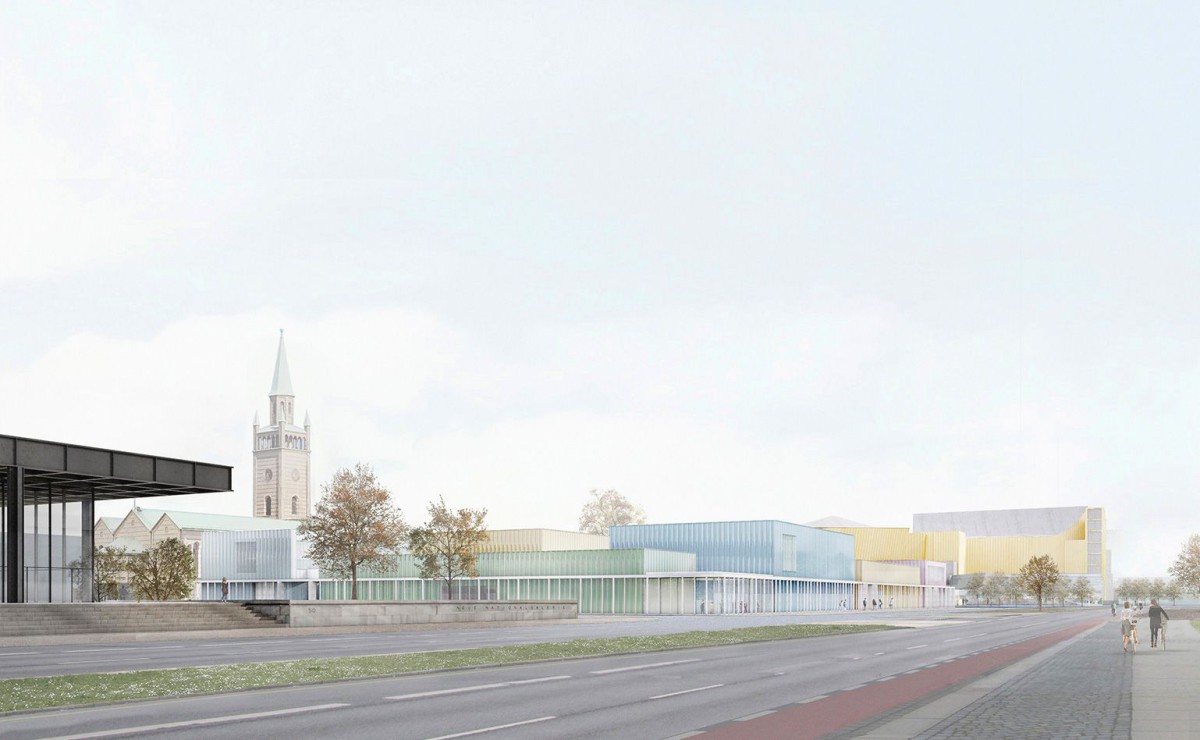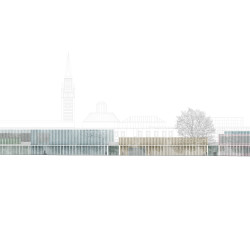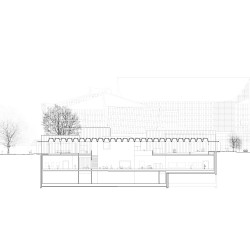WEYELL ZIPSE Architects . HÖRNER Architects
The Museum of the 20th century does not try to place itself as a solitaire between the two archictural icons of the Philharmonie and National Gallery.Instead, it occupies the whole site as an extensive, flat volume. The groundfloor is open to all sides, and has the character of an urban square, which houses the manifold exhibition programs of the museum as individual volumes. The museum contains different gallery typologies and dissolves the rigid, didactic dra- maturgy of the classical museum. A city of art originates. The diversity of the different media, epoches and art forms define their own spatial constellation, and generate an autonomous house for each progammatic section. A plurality of architectonical imaginations develops, which give each room a specific quality and character to the exhibitions. The ar- chitecture becomes thus a part of the curatorial mediation, whilst locating the rich collection through a spatial reading and combining it in continously new ways. The non-hierarchical organization encourages visitors to find their individual way through the museum, and emphasizes the representation of an open puralistic society. The facade consists of waving glass panels, that are coloured in different tones, giving the building a sculptural presence. It thereby reacts to its surrounding by constantly changing its perception and establishes a dialogue with the viewer.
WEYELL ZIPSE Architects, 2016
_
Idea Competition 2015
The empty centre of the “Kulturforum“ is occupied by an extensive flat, one story museum building. This causes a concentration and vitalization of the existing public spaces, that are momentarily vast and diffuse. The eight meter high volume is a respectful counterpart to the historic silhouette of Philharmonie, Library, St. Matthäus-Church und the National Gallery, and is only complemented by a tower of the Museum of the 20th century. The tower houses the non-art-related functions of the museum, which allows the groundfloor to be extensively used for public functions and exhibition areas. A generous public passage connects the “Kulturforum“ in the Eas-West direction, and is perpendicularly overlayed by a second passage in the basement, which makes the connection to the National Gallery. The facade consists of to layers, that forms a porose border between the building and its surrounding.
WEYELL ZIPSE Architects, 2015
_























